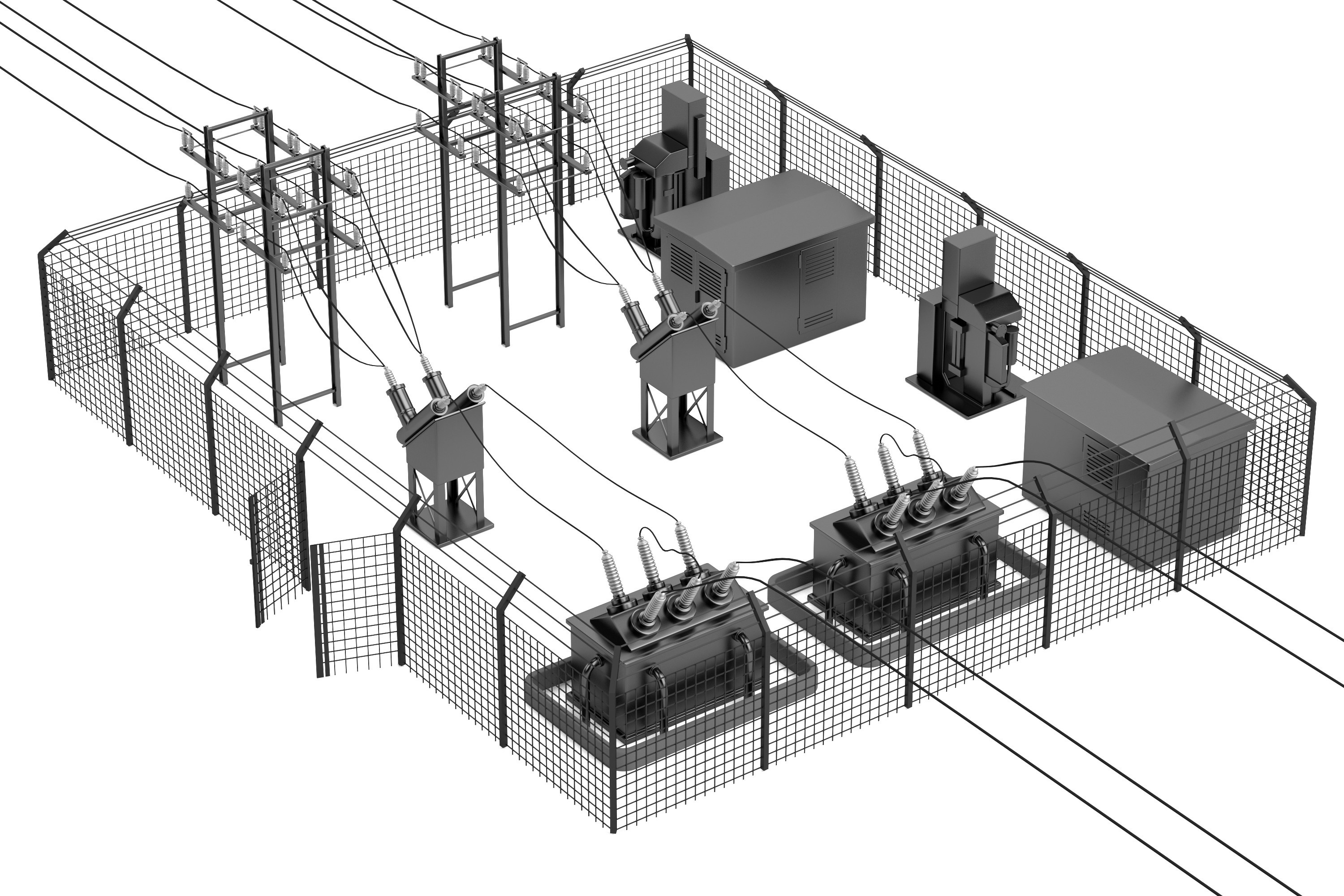Fire-Resistant Fencing
Risk Reduction Category

Technology Description
Utilities require a perimeter barrier around assets such as substations and switch yards for safety and security, protecting both the equipment inside and the public. Chain link, constructed of galvanized, low-carbon steel, is the most common material used by utilities to deter intrusion, safeguarding animals and humans from electric shock, while providing a measure of physical security for the utility assets against theft and vandalism. A perimeter fence around utility assets should be electrically safe to the touch while being durable against the elements, affordable, and effective against cutting, climbing, burning, and battering.
An alternative to traditional galvanized steel for fencing is fiber-reinforced polymer (FRP), which is a combination of plastic-based matrices reinforced with fibers. Technically, when the fibers are glass, the product is called glass-reinforced polymer (GRP) but is also correctly identified in the broader FRP category, which includes fiber materials other than glass. FRP can have strength and rigidity suitable for structural applications such as piers, catwalks, handrails, skids, and the like. Being non-conductive, it can be used safely near energized equipment. When constructed as rigid mesh, FRP can be used as an alternative to chain link, having comparable wind-resistant properties, visual barrier, and aesthetics. The product in this configuration is often referred to as ENC (electrically non-conductive) fencing. Additionally, being a fire-resistant material, it may provide a containment benefit for substation fire or it may protect utility assets from an external fire. It also survives a fire at higher temperatures than chain link, which deteriorates quickly when the zinc coating is compromised.
Technical Readiness (Commercial Availability)
FRP is a mature technology, with history dating back to the 1930s when it was introduced as fiberglass. Since then, the formulation has evolved into a vast variety of products optimized for specific applications. Electric utilities have an established and tested familiarity with FRP as a rigid and nonconductive material suitable for use as manhole covers, grating, handrails, and other applications.
Because the material can be refined, colored, and textured, it is often used as an alternative to wood for privacy and ornamental fencing. A few manufacturers offer FRP as a mesh panel, designed in its appearance and performance to be an alternative to chain link fencing. Some utilities are using FRP fencing around substations. While fire resistance is also one of the properties of FRP, it typically is not the primary selling point. For example, polyester-based FRP is inherently fire-resistant and is the material from which ENC is commonly manufactured. Meanwhile, phenolic-based polymers are more fire resistant, but are rarely used in ENC fence construction because of the added cost and incremental benefit.
AIMS Composites
https://aimscomposites.com/enc-security-fencing/
Fibergrate
https://www.fibergrate.com/products/unique-product-solutions/enc-fencing/
AMICO/Seasafe
https://amicosecurity.com/anc-fencing/
ICE Composites
https://icecomposites.com/downloads/ICE%20General%20Brochure%20GB%2003%2021%20NE.pdf
Implementations / Deployments
AIMS Composites
Installed by CenterPoint Energy in Houston, TX for its hurricane resistance (rated for up to 150mph winds).
https://www.facebook.com/100063697352112/videos/294284379892225?__so__=permalink